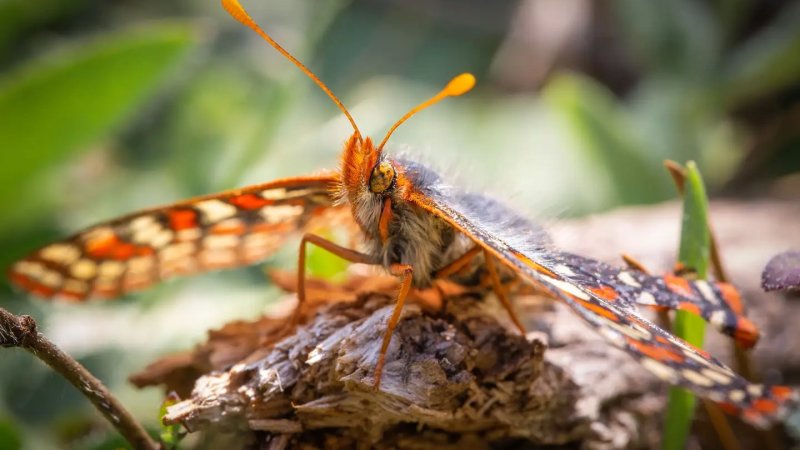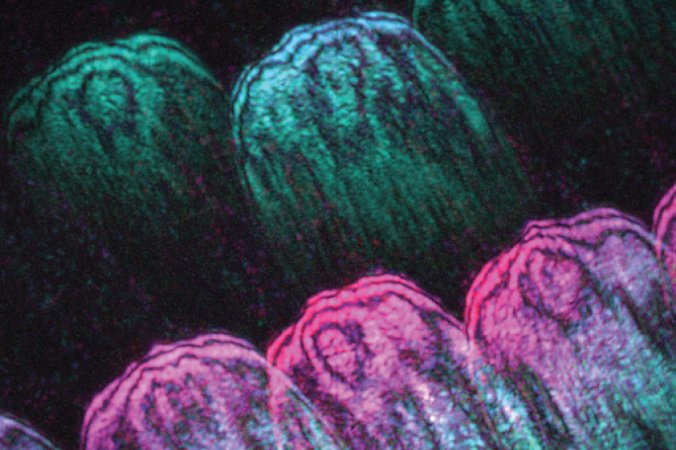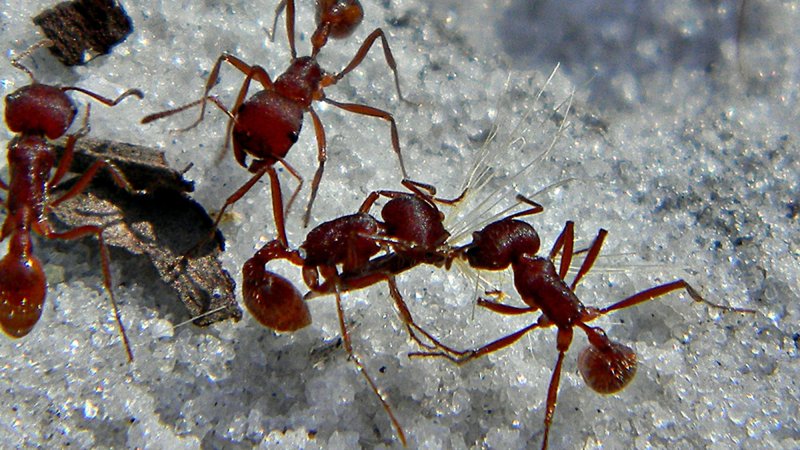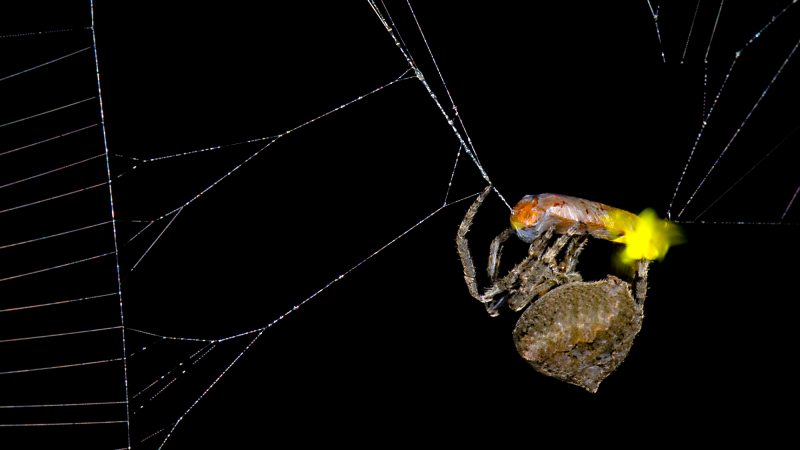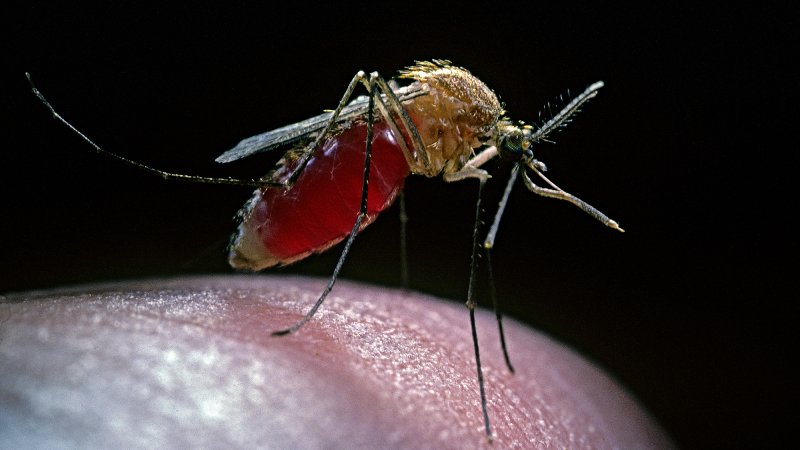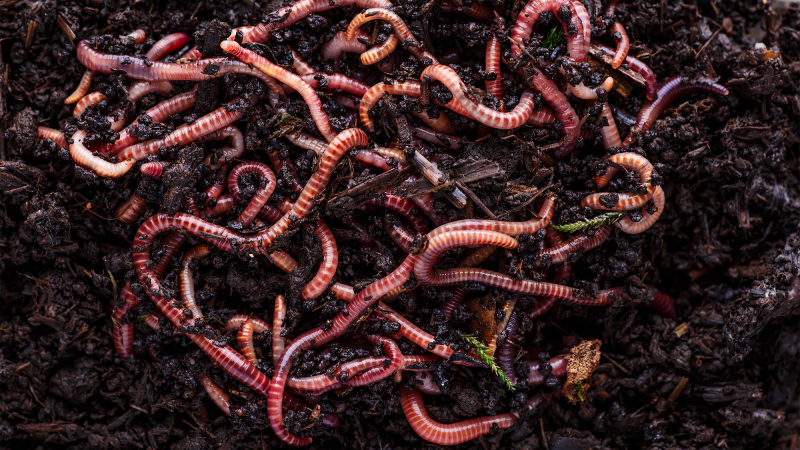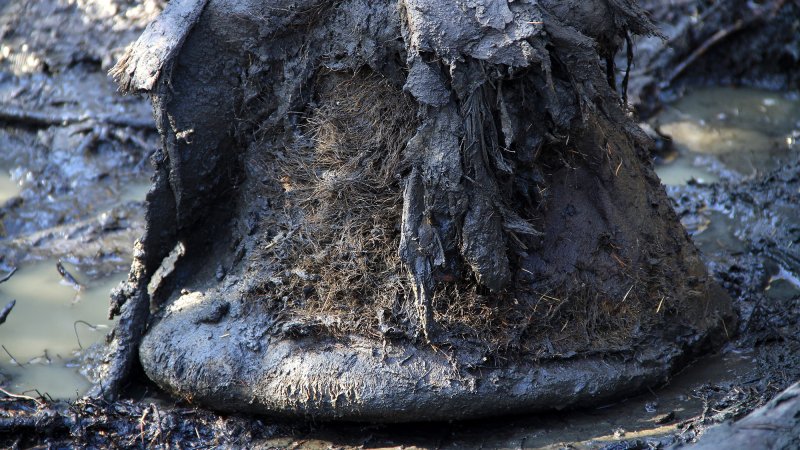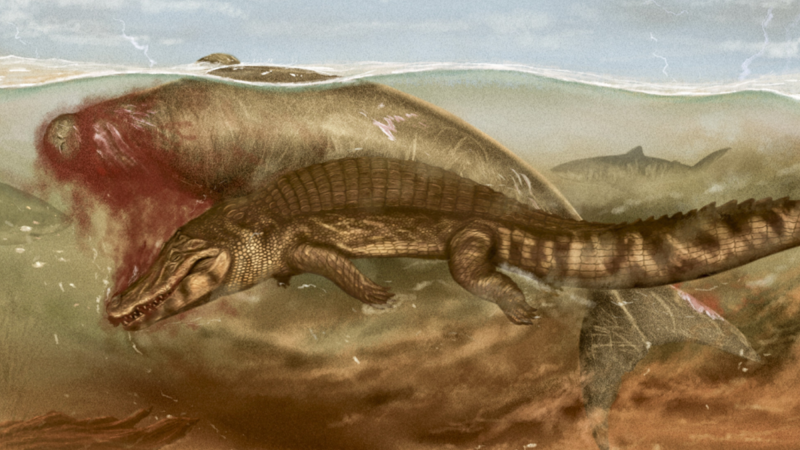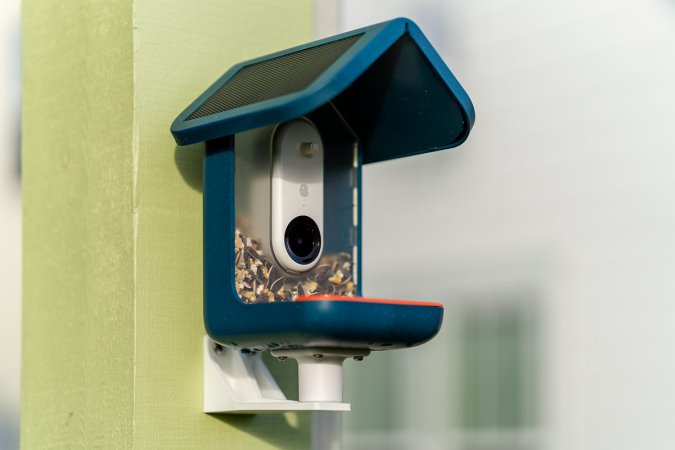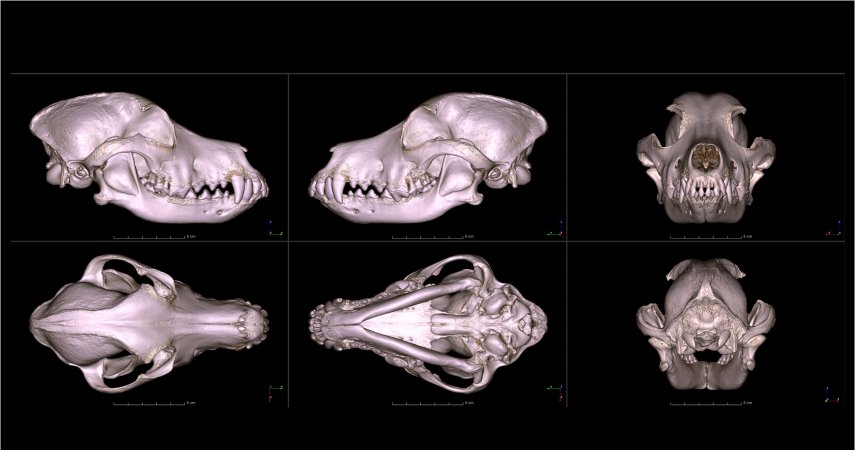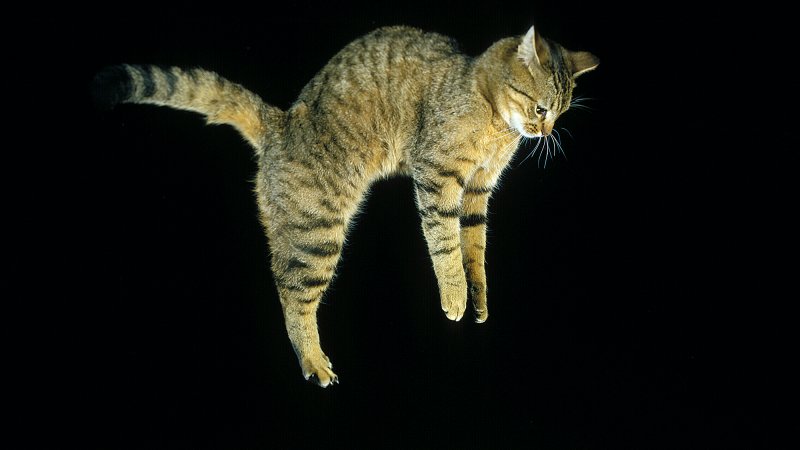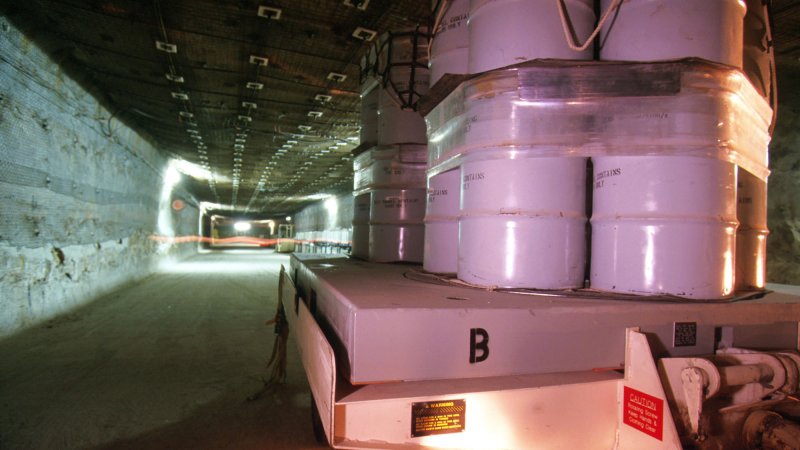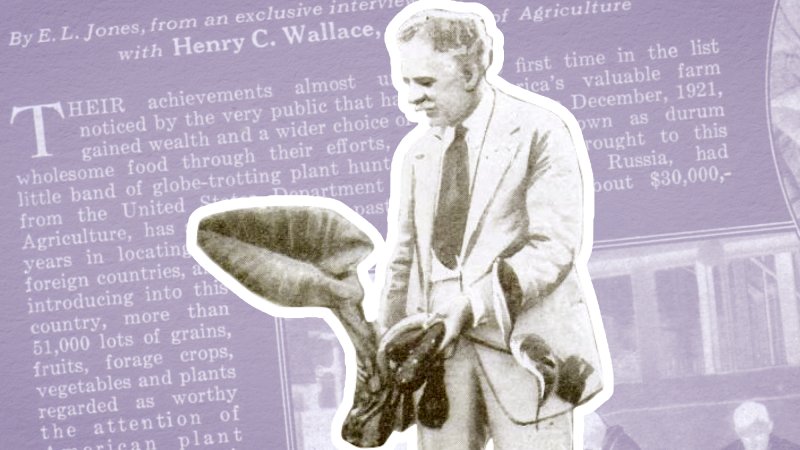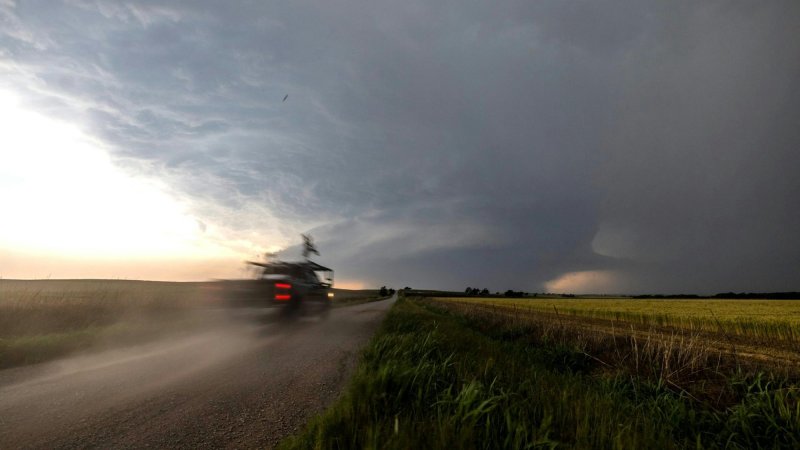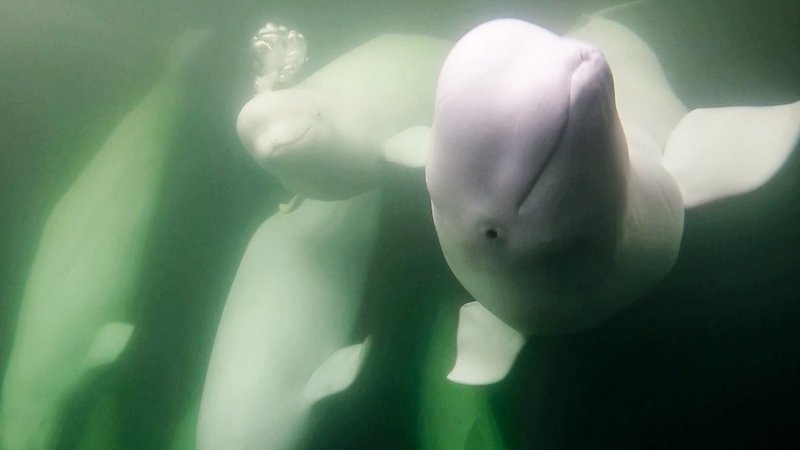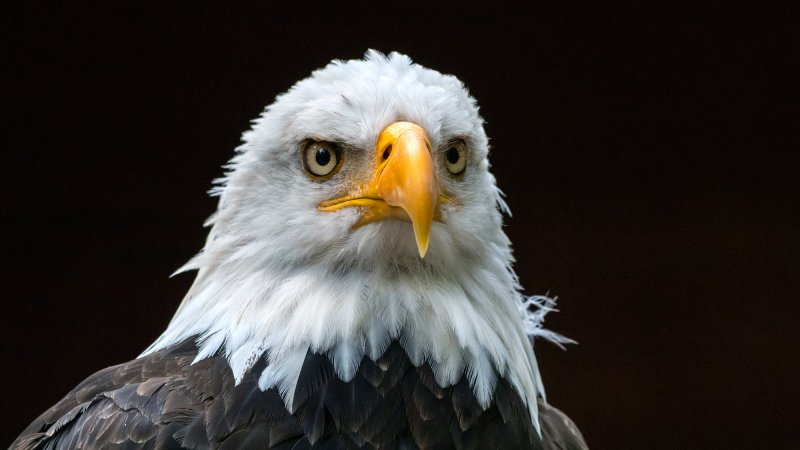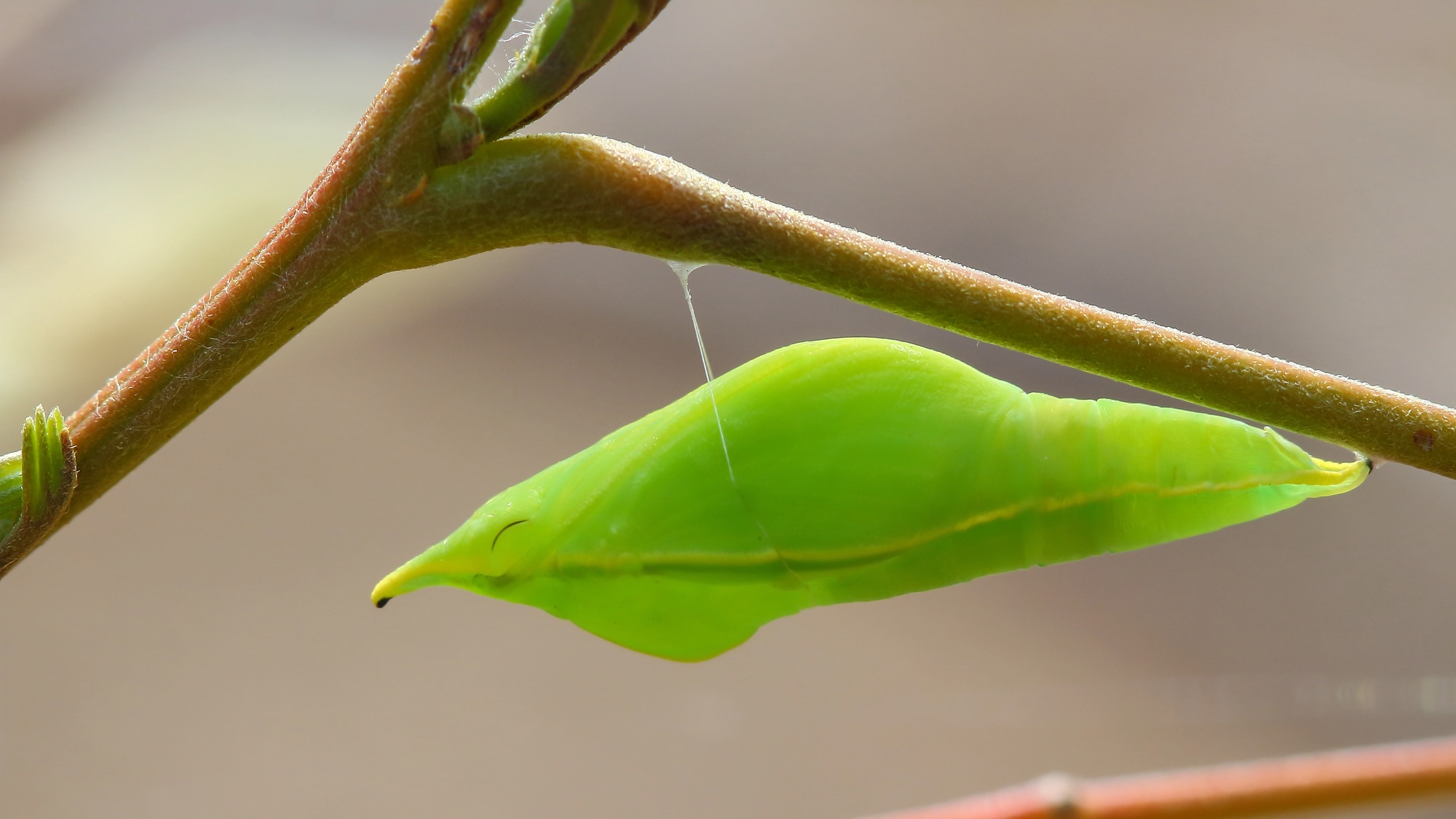

A chrysalis needs to be perfect when a caterpillar or silkworm prepares to transform from pupae to winged adults. Since the insect can’t emerge until it has completely matured, any overlooked structural flaws or weaknesses may prove fatal for them. But just as important is a chrysalis’ ability to remain anchored in place—and according to a new study, when it comes to metamorphosis, a butterfly’s delicate silk threads are some of its strongest and most reliable tools.
Researchers at China’s Southwestern University recently studied the life cycles of two butterfly species—Danaus chrysippus (plain tiger) and Papilio polytes (common Mormon)— and two silkworm species. When it came time for the butterfly and silkworm caterpillars to build their respective chrysalises and cocoons, the team watched as the insects each spun silk into net-like pads. Using an arm-like appendage called a cremaster, they then attached their chrysalis or cocoon to a branch.
[Related: How everyone can help monarch butterflies.]
“The connection between the cremaster and silk pad was observed to be similar to that between the hook and loop of a Velcro fastener, except that the cremaster hook is anchor-shaped rather than being a single hook,” the authors explain their paper published July 22 in ACS Biomaterials Science & Engineering. “Such a connection will remain secure, ensuring the safety of the pupae during exposure to wind and rain.”
Once the insects began undergoing metamorphosis, the team then collected silk samples to measure their diameter and tensile strength. After noticing that silkworm silk was stronger and thicker, researchers conducted a chemical analysis to determine that the butterfly silk lacked as many beta sheets (molecular structures located within certain proteins) as silkworm silk.
[Related: This butterfly hybrid thrived despite evolutionary odds.]
Because of this, the butterflies include an added protection within their chrysalises. The caterpillars twist around 20 separate silk strands into a tiny strap resembling a seat-belt that is eight times stronger than a single thread. They then wrap the rope around their thorax within the chrysalis to keep them in place.
“We discovered that butterfly pupae develop unique body features to establish secure bonds with silk,” the team wrote in the study’s abstract. “This enables them to effectively undergo metamorphosis and endure harsh weather conditions and surroundings.”
The new study highlights the intense complexity and planning that needed to successfully undergo metamorphosis. So the next time you see a cocoon or chrysalis outside, pause a moment to admire their incredible strength.
